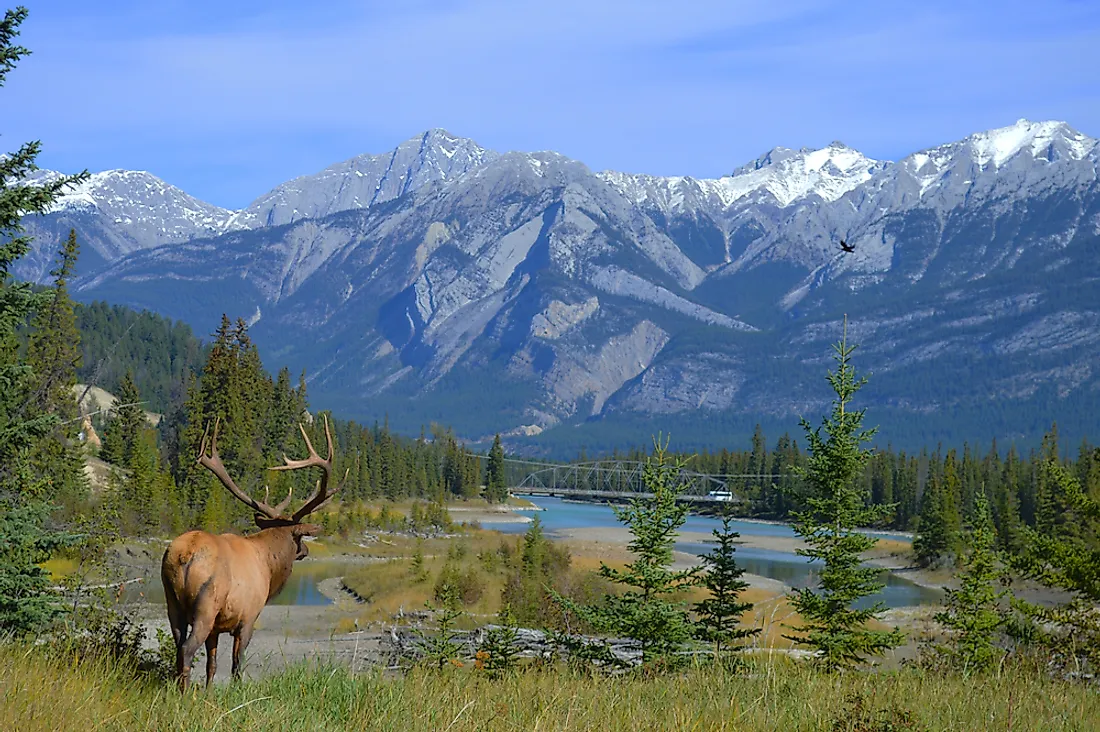What are the Differences Between Moose and Elk?

The elk (Cervus Canadensis) also known as Wapiti, is among the world's largest deer species in the Cervidae family. They are the largest land mammals found in the regions of Eastern Asia and North America. The elk can sometimes be confused with the moose - however, the moose (Alces alces) is the largest extant species found in the deer family. When it comes to telling the two apart, the guidelines are more complicated than one would assume.
Physical Features
An elk is a large animal with a reddish hue to its hair while the moose is much larger than an adult elk and has a darker brown coat which almost appears black. The moose has a long bulbous nose with a 'bell' under the throat while the elk has a narrower snout with no 'bell' under the throat. A mature bull moose has broad and flat antlers while the elk has pointed antlers. However, the antlers of some young moose bulls may not have flattened out yet.
Social Characteristics
Moose are a more common species than elk. The moose and elk tend to act differently when approached by humans. Typically, the elk flees at the sight of people whereas the moose is less likely to flee making them easier to kill. While elk gather in herds, moose are solitary animals who prefer to travel alone. Sometimes moose can be seen traveling in small groups but this is a rare occurrence. If moose are traveling in groups they are often with the company of their young ones.
Tracks and Hooves Shapes
Both the elk and moose species are usually hunted for their meat and antlers. Therefore, most hunters are able to distinguish between the elk and moose by examining their tracks. According to most hunters, the elk often leave a three inch wide and four inch long print while moose leave deeper and larger tracks. The track marks of the elk also show evidence of the animal travelling in herds. Since the moose has a bigger body than the elk, its track marks tend to sink deeper into the soil compared to the slightly lighter legs of the elk. Track marks also largely depend on the type of ground. The two animal species differ in the shape of their hooves. The tip of an elk's hooves are somewhat blunted as they are designated for travelling longer distances than their counterparts. The hooves of moose are pointed since the animal has a different migratory pattern. Moose have heart-shaped hooves like that of a deer while the elk's hooves are tooth-shaped.
Naming
The elk and moose might be two different species, but they all belong to the same family. In Europe, the word elk is used to refer to the moose (Alces alces) whereas Wapiti (Cervus Canadensis) is used for elk.
Location
Moose are primarily found in Canada and Alaska but are also concentrated in New England, Latvia, Estonia, Scandinavia, Fennoscandia, and Russia. The elk are a native species to North America and Eastern Asia. However, the species have been successfully introduced to other parts of the world such as Australia.











